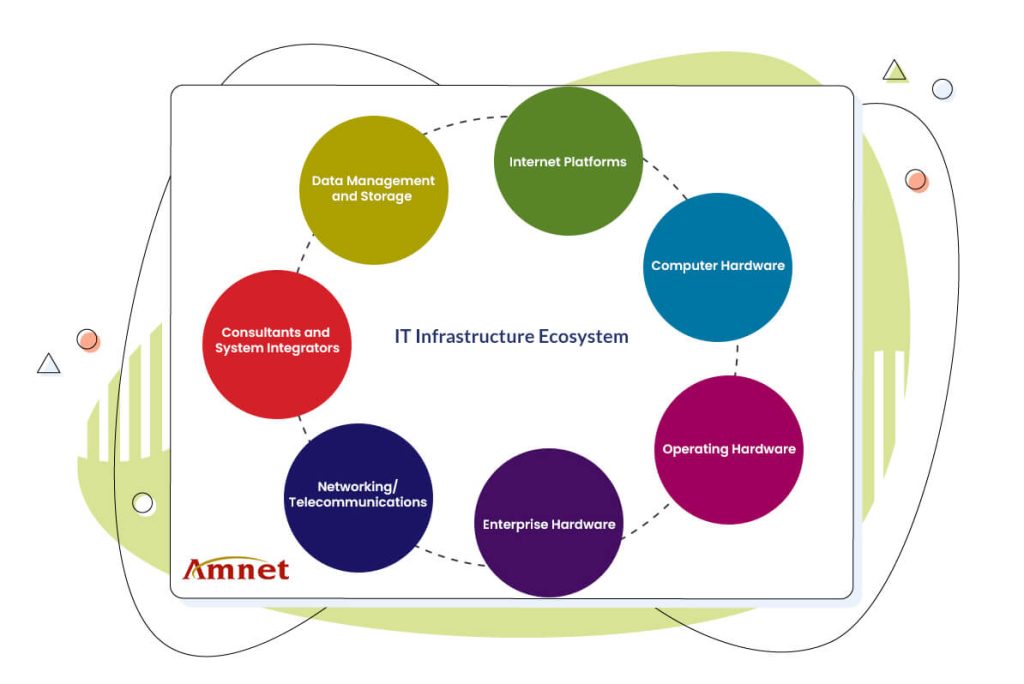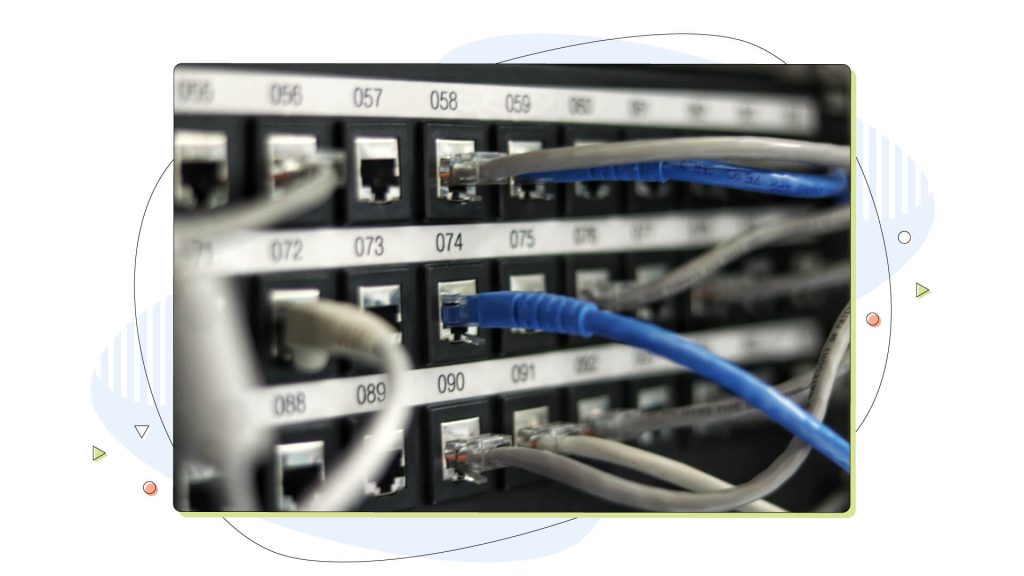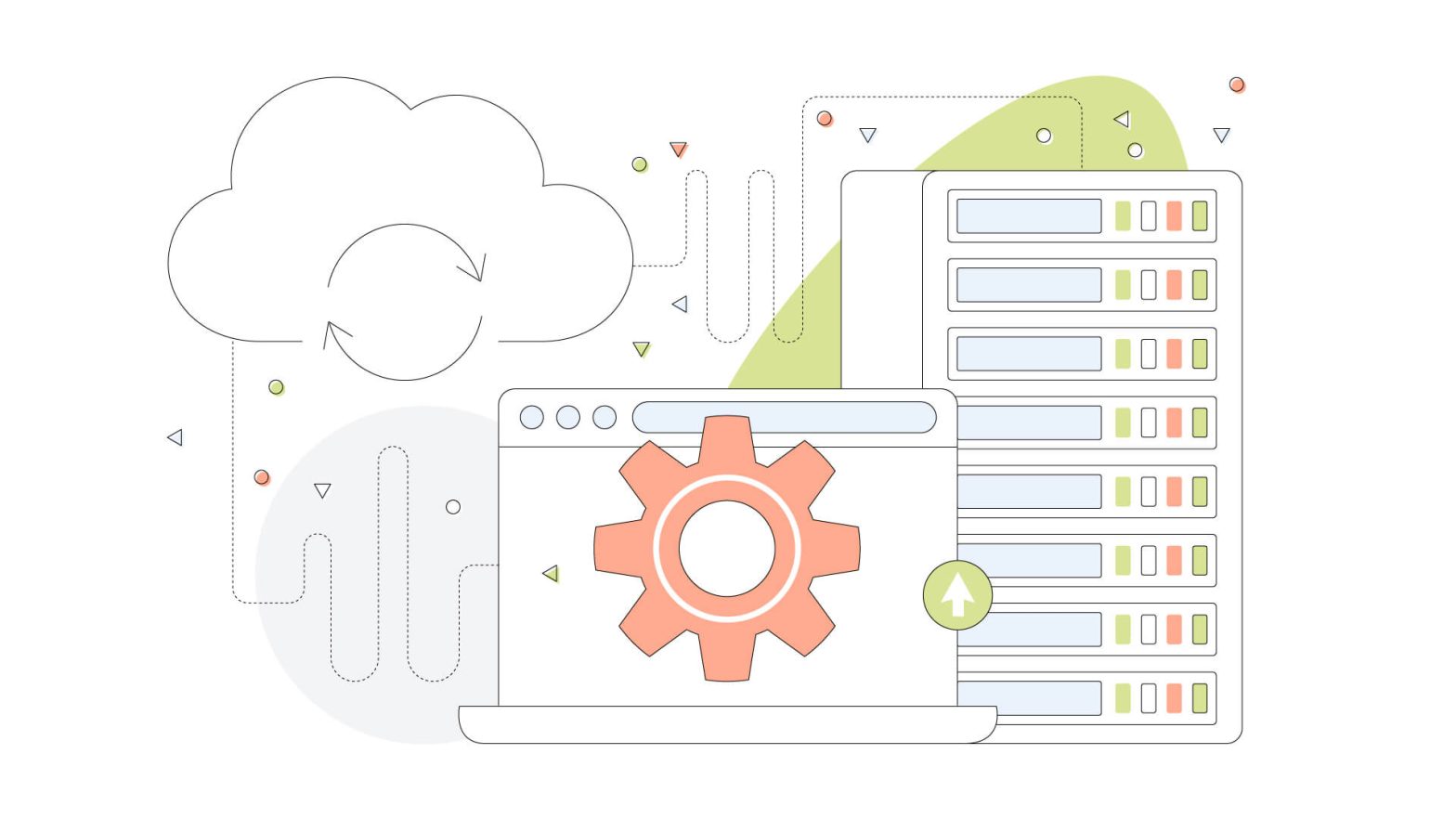Any business, whether with a physical or digital presence, needs some kind of infrastructure to operate. Think of it as the tools a technician needs to do their job or the fuel your car needs for you to drive it.
IT infrastructure, on the other hand, is an ecosystem of networks, hardware and software. If we use simpler words, it implies the connection between computers and other gadgets (printers, routers, and hubs).
Communication via the Internet and cloud storage is a part of the IT infrastructure scope. The specialists who work with IT technologies are not a part of IT infrastructure. If you are working with technology, it’s worth familiarizing yourself with what exactly is meant by the infrastructure elements.
- Elements of IT Infrastructure
- Key Features of IT Infrastructure
- What Is IT Infrastructure for?
- What Exactly are the Benefits of IT Infrastructure?
- What Are the Prospects for Using IT Infrastructure?
- What Is the Method for Implementing IT Infrastructure?

Elements of IT Infrastructure
Hardware
Hardware includes computers, communication devices, and office equipment. Computers can be divided into two large groups.
The first group is personal computers that specialists use to perform specific work tasks as part of their daily professional activities. The second group is high-performance computers. They serve different purposes. They are used in the process of creating large storage facilities and solving complex problems that personal computers would not be able to handle.
Workstation computers are commonly known as the standard, but servers can also possess equal power and complete tasks faster.
Network
The network is the essential infrastructure for transferring data between different computers and devices. This can be done not only through the Internet but also through internal data transmission systems simply known as networking.
Routers and switches are the common parts of this type of infrastructure and can be found in small and large offices and even inside our homes.
Software
If we are talking basics here, then it refers to the operating systems powering the IT infrastructure. For example, here we are talking about operating systems, different types of software environments, programming languages, and database management systems.
Every business has different needs, and as a result, the software can vary a lot. But the core components like the operating system, devices, networking tools, internet browsers etc., are usually very standard.
Key Features of IT Infrastructure
Today, IT infrastructure can have components with great functionality. Technological progress has touched many areas of business. Therefore, computer technology can be found not only in high-tech industries such as space exploration or engineering and construction. It’s widely used in agriculture, trade, and even art.

Probably, in our time, it would be difficult to find a business field in which computer technology is absent. Based on the dynamics of the development of IT tools, this process will only intensify further. Here are a few factors based on which you can make such a forecast:
- Computer technology allows you to do the usual work much faster. Monotonous and same-type processes can be entrusted to automation systems. This allows you to unload specialists and direct their attention to more complex creative tasks that require creative thinking.
- Using IT infrastructure provides an opportunity to reduce carbon emissions and reduce the use of paper. This is especially true for those areas of business that use cloud technologies.
- The market of IT products provided the business with technologies that allowed it to work effectively in a remote mode. This made life easier for those specialists nearby and made it possible to involve people from different countries in the same digital work environment. In turn, this opportunity allowed businesses to choose specialists for cooperation, having a greater offer in terms of price and quality of work offer. You can see the portfolio of people living on other continents. And if their offer is more attractive, then the choice of such cooperation will be a rational decision.
Thus, the use of IT infrastructure by businesses makes entrepreneurs more successful and adaptable to the new challenges of a dynamically changing world. It is also worth considering in detail what functions are assigned to the IT infrastructure. More on this later.
What Is IT Infrastructure for?
This infrastructure is used to perform several important tasks:
- Ensuring instant exchange of necessary information. The continuity of many business processes depends on how well data is exchanged and delivered to each person.
- Higher productivity. This is important for fast work without quality loss. A business that adapts to such modern requirements can remain successful even in such niches with high competition.
- Improving communications within the company. All interactions between employees and departments must be effective within the company. For that to work, we have to rely on communication software like Slack, Microsoft Teams or Discord, among other remote work tools. Only with this approach can we expect that communication will increase work performance.
- Uninterrupted interaction with the company’s clients who need help. This can be seen very clearly in the helpdesk example. If it functions efficiently and provides customers with a comfortable experience, it reflects well on the company’s development. And if not, then customers feel abandoned. They don’t know how to solve the problem with the product.
The effective use of IT infrastructure is becoming one of the keys to the growth and development of enterprises operating in various fields.
What Exactly are the Benefits of IT Infrastructure?
From generalized conclusions, let’s move on to specifics. Let’s consider exactly in which areas IT infrastructure can be useful for business.

For a business to function better thanks to the IT infrastructure, it’s worth contacting specialists in this industry. They will not only advise on important details of selecting relevant IT solutions for a particular area but also help implement them. This approach can save you from critical mistakes and wasteful spending.
With professional services, you can define the tasks of the IT infrastructure specifically for your company. This will provide an opportunity to use relevant technological solutions in his work and strengthen the company within its key specialization. So, experts will help you determine which infrastructure is best for your case – traditional or cloud.
When the IT infrastructure is configured correctly, it provides:
- Ηardware and software οptimization so that the work takes place without interruptions and that there are no system failures.
- Ability to create external resources and manage them. The type of such resources should be selected together with a competent IT specialist. It’s a professional who will provide an opportunity to select options for external resources that will improve the work of the enterprise. For example, in some cases, several resources will be appropriate if we discuss a large-scale business with big ambitions. And in other situations, it is worth choosing one thing. It can be a corporate website, platform, or application.
- Data protection. To date, many special applications and programs have been developed that allow you to protect data. This option applies to both cloud storage and devices. The same applies to your website. For added security, there are always solutions like HostPapa’s Protection Power service that can save your site in a rainy day.
An experienced team must be engaged in selecting specific IT solutions for the company. This will protect against the introduction of expensive IT tools into the work of the enterprise that does not correspond to its tasks and goals. Thus, the IT infrastructure can significantly strengthen the company’s work.
What Are the Prospects for Using IT Infrastructure?
Companies worldwide are actively investing in IT infrastructure, the total spending on which has increased by 16.3% in the fourth quarter of 2022. When the architecture of a digital product is designed professionally and with high quality, it contributes to a positive user experience.
Introducing high-quality software into actual processes in the company’s work is a significant step in its development. The same goes for software optimization, which leads to better software solutions.
All of the above is especially felt when the specialists initially develop an effective IT strategy. If there is no such strategy, there is a risk that only points solutions and tools will be applied in the IT direction in the company’s work, which will not be aimed at a clear, measurable result.
It’s also vital that specialized specialists provide consulting assistance at all stages of the implementation of such a strategy. They direct their efforts to analyze the intermediate results of specific actions and decisions. And if these results do not meet the planned expectations, it’s necessary to correct the strategy with further testing in practice.
Sometimes such a correction is unnecessary because the actions were based on superficial hypotheses. The demands of the market could just change. Accordingly, IT solutions need to be transformed to fit the company’s new product line. People with high emotional intelligence, flexibility of thinking, and adaptability to context changes are better versed in timely and relevant solutions for IT infrastructure. In this case, they should be developed by professionals who have developed hard and soft skills.
What Is the Method for Implementing IT Infrastructure?
For such an infrastructure to qualitatively develop a business, it’s worth first getting acquainted with the methods of implementing it. Let’s see it in detail:
- Identify key business objectives. Secondary tasks may change depending on market dynamics. There must be consistency. If everything is good with strategic goals, it will be easier for specialists to develop IT infrastructures.
- It’s necessary to determine the company’s requirements for the IT infrastructure itself. It’s also essential here to correctly classify these requirements into key and secondary ones. For example, key requirements include infrastructure support that keeps the business running smoothly. Secondary conditions relate to those IT infrastructure options that do not directly affect the company’s viability. This distinction is important. It makes it possible to clearly understand the gradation of the elements of the used IT infrastructure by priority.
- Then, it is necessary to assess the current state of the IT infrastructure and its shortcomings. In many cases, companies already have such an infrastructure in place, like computers and networking. In this case, completely replacing existing IT tools may yield no positives. They may need to be upgraded with newer parts to increase the results. Only experienced professionals are able to effectively help in such cases. Otherwise, there is a risk that valuable tools will be discarded with a complete change in the IT infrastructure.
- Set a budget. The expenses that will go into IT infrastructure development can be conditionally divided into two groups. The first of these is an immediate investment. The second is current spending. Even the smallest detail must be thought out for the infrastructure to ensure the business’s profitability. Therefore, competent budget planning is a crucial component of implementing IT infrastructure.
- Choose a reliable IT service provider. Many IT companies on the market offer their solutions to businesses. However, choosing a good service provider can be difficult. Especially – when the owners and management of the company are not quite oriented in IT services. Therefore, it’s worth considering in more detail the criteria for choosing such a supplier. And it’s not only the infrastructure. For example, having a reliable web hosting provider can showcase your business’ best image from the first click.
First of all, the selection criteria will deal with specialization. The field of IT is vast. Many specialists want to take on the project. But it’s best to start cooperation with a team with specific experience in your niche. Such a team will not only understand what you want. The specialists will have practical experience in the implementation of such tasks. It will also allow them to bypass possible “pitfalls” and select exactly those IT tools for improving a client company that will work.
Another criterion for choosing specialists is reviews of their real previous clients. Such reputational arguments related to the background of an IT company are significant. They make it possible to understand whether there is a reason to trust the chosen specialists.

Summing It Up
So, let’s sum up. Here are some key thoughts about IT infrastructure:
- It consists of three key groups of elements – hardware, network, and software.
- Proper use of IT infrastructure makes it possible to automate tedious work processes and facilitate human labour. Specialists have more opportunities to direct their efforts toward solving more creative tasks that require intensive human delivery.
- IT infrastructure allows not only to increase the company’s efficiency but also to improve the communication processes between its various structural divisions.
A considerable number of companies, according to the above statistics, need to upgrade their IT infrastructure. Such enterprises are in the vast majority.
And to win in competition with other companies, you need to implement solutions that will make it possible to adapt to a dynamic market. Therefore, it is worth thinking carefully about this issue and taking the help of professionals who can orient in more detail.
Author Bio:
Kevin White is a talented writer and editor. In addition, Kevin is a freelance guest writer and blogger who helps B2B companies reach their audiences more effectively. He can be found in the gym, on a snowboard, or at other sporting events when he’s not writing. Kevin is a caring husband and the father of two lovely girls. He is responsible and attentive in everything he does and is always focused on the result. You may feel free to reach out to him at GuestpostingNinja@gmail.com for collaboration suggestions.




